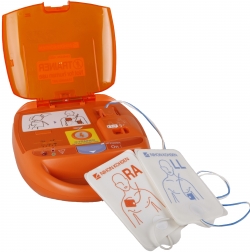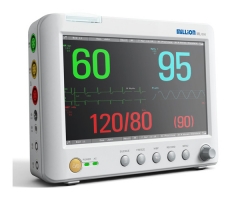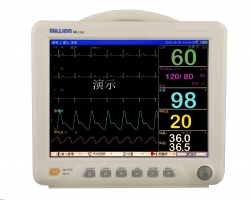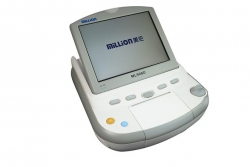Wireless sensor network (Sensor Network Wireless) is a new technology, which is a combination of sensor technology, embedded computing technology, modern network and wireless communication technology, distributed information processing technology and other technology, the technology has a wide range of application scenarios.
With the development of technology, WSN (Sensor Network Wireless) will have a profound impact on many aspects of medical practice. This paper mainly describes the architecture of wireless sensor network medical monitoring system and the general principles of the design of monitoring nodes.
1 architecture of Wireless Sensor Networks
Typical wireless sensor network architecture is shown in Figure L. In the monitoring area, a large number of sensor nodes are arranged in the monitoring area. The nodes are organized by the way of organizing and using the wireless communication technology to transmit data. Each node has the dual function of data acquisition and data fusion. Node to its own information and other nodes to forward to the information of the initial data processing and information fusion to the adjacent node relay transmission to the base station, and then through the base station to the Internet, satellite and other ways to send to the end user.
Node is the basic function unit of wireless sensor network, the specific application of different, the design of the node is not the same. The basic components of the sensor nodes are: sensing unit, processing unit, communication unit and power supply, the structure of the node is shown in figure 2. In addition, according to the specific application requirements can add functional units, such as: positioning system, mobile system and power supply system, etc..
2 Application of wireless sensor network in medical treatment
Wireless sensor networks use its own advantages (such as low cost, simple, fast, real-time non-invasive collection of patients with a variety of physiological parameters, etc.), so that it has great potential in the field of medical research, hospital /ICU ward or family daily care, etc., is currently a hot research area.
The micro sensor nodes which are used to detect human parameters can be used to monitor the patient's heart rate, blood pressure, electrocardiogram, heart sounds and other physiological parameters, and the information is transmitted to the monitoring center. In addition, the drug management and development of new drugs, blood management and other aspects, but also its unique application. In short, wireless sensor network provides a more convenient and low cost method for the future remote medical monitoring system.
3 medical system structure based on Wireless Sensor Network
The medical monitoring system based on wireless sensor network consists of medical sensor node, medical monitoring base station (medical SINK node) and community / hospital care center. The guardianship system is shown in figure 3.
Medical sensor nodes and monitoring base station to form a personal / family or ward wireless sensor network, a number of such networks can be composed of a community or the entire hospital monitoring network, and even a wider range of remote medical monitoring system. First, medical sensor nodes collect human physiological parameters, and the parameters of the collection to the simple processing, the way through the wireless communication directly or indirectly by way of the transfer of data to the base station. After further processing of the data, the monitoring base station is transmitted to the monitoring center, the monitoring center is analyzed and processed, and the information feedback to the patient is carried out in time. Monitoring center can also use a variety of ways (Internet, mobile communications network, etc.) for remote data transmission, and other monitoring center shared information.
4 medical sensor node design
The basic structure of the medical sensor node is shown in Figure 2, which includes processing module, sensor module, wireless transceiver module and power supply module.
Sensor module is used for the perception, acquisition and conversion of the external sensor signal. Is a module that is actually in contact with the external signal. However, medical sensor is a measurement object in life body. In particular, the human body can be said to be the most complex system in the world, there is a high degree of correlation between physiological variables and not easy to close. So medical sensor to take out the prediction of the amount of physical quantity, and come to a reliable and meaningful measurement data, but also to ensure the safety of the tested object.
Because of the human body parameters are mostly weak signal, generally only a few mV level, and even lower, and there is a variety of noise (measurement of environmental noise, instrument and human friction noise, etc.), power frequency interference (by the measurement environment around the existence of 50 Hz) and a variety of noise and other adverse factors. Therefore, in the design of the specific medical sensor nodes, adding analog circuit processing module, the module generally includes the following parts: the amplifier circuit, filter circuit, notch circuit and analog digital (A/D) conversion circuit, etc.. In the node design amplifier circuit generally uses the multistage amplifier (three or four) and the final amplifier circuit. In addition to the magnifying function also generally have a level to enhance the function; and the filter circuit: should meet the cut-off frequency of the circuit is simple, reasonable, flexible and convenient regulation high pass and low-pass cut-off frequency requirements, reasonable filter out signal of high frequency and low frequency interference; notch circuit: with the widely used of symmetrical double T resistance capacitance active notch filter or integrated switching capacitors and non symmetrical resistance capacitance network trap. In short, the analog circuit processing module is mainly to the acquisition of the signal amplification, filtering, trap and other processing, remove the noise and interference in the signal, extract useful signal.
The processor module is the core of the sensor node, which is responsible for the whole node's equipment control, task allocation and scheduling, data integration and transmission. At present, the processor module is used in the Atmel AVR Series MCU, TI company's MSP430 ultra low power processor, Motorola and Renesas company's processor as well as 32 bit embedded processor ARM. In the design of the node, we must program the processor module to realize the acquisition and control of the sensor module, the realization of A/D conversion and the transceiver of the wireless communication module.
Wireless transceiver module for data communication between nodes. In the wireless field should use more wireless transceiver module for CCl000 CC2420, Chipcon, CC2430. Commonly used wireless communication technologies are: 802.1lb IEEE, 802.15.4 Bluetooth (ZigBee), UWB, RFID, IEEE, IrDA (infrared), etc.. 802.15.4 IEEE (ZigBee), Bluetooth to realize the data communication between the nodes and the base station.
The power module provides energy for the nodes and is the basic module of the wireless sensor nodes. However, the energy of sensor nodes is limited by the size of the nodes. Therefore, in the design of the whole node, with low power consumption, high accuracy as the main requirements, to take a series of effective measures to save energy. In addition, medical sensor nodes can not change the battery frequently, affecting people's normal life. Therefore, the design of medical nodes should have a longer life cycle.
5 medical wireless sensor network monitoring system is a challenge
Although wireless sensor network has its unique advantages in the establishment of medical care system, the application of wireless sensor network has the following challenges:
(1) dynamic networking and node mobility management in large-scale networks: when the monitoring system is extended to the community, the city and even the whole country, the network scale is huge, and the monitoring nodes and the base station have certain mobility. Therefore, it is necessary to design a suitable network topology management structure and node mobility management method.
(2) data integrity and data compression: nodes sometimes need to monitor human parameters for up to 24 hours, the data collected by the node is large, while the node's memory capacity is small, and the compression algorithm is often used to reduce the storage and transmission of data. However, the traditional data compression algorithm is too large to fit the sensor node. In addition, the compression algorithm can not damage the original data, otherwise it will cause the patient 's fault diagnosis.
(3) the data security: wireless sensor network node using self organization way of networking, vulnerable to attack, in addition, the patient's information needs to be kept confidential. However, the computing power of sensor nodes is quite limited, and the traditional security and encryption technology are not applicable. Therefore, it is necessary to design a kind of encryption and decryption algorithm for sensor nodes.
6 summary and Outlook
With the development of technology, wireless sensor nodes gradually to the multi parameter, intelligent, micro, low power and other direction of development, wireless sensor network will gradually be applied in the medical field. The development and construction of the intelligent ward and community monitoring system is the trend of the development of medical care in China and abroad.








